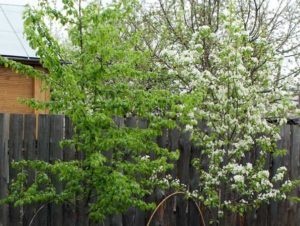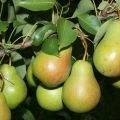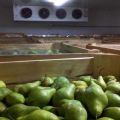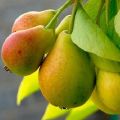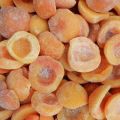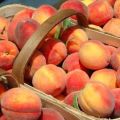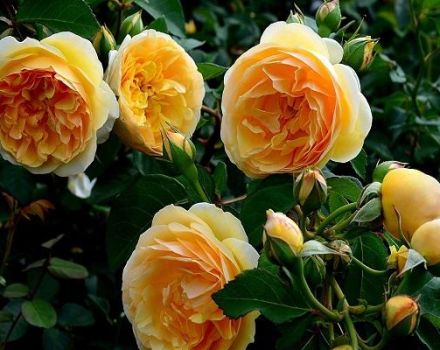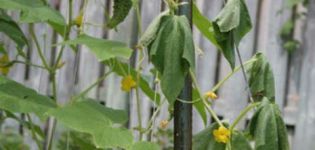Description of pear varieties Nadyadnaya Efimova and cultivation features
Pear of the Nadyadnaya Efimova variety gives fruits of extraordinary beauty. These fruits are like plastic props - perfect, no flaw. However, no tricks are needed to grow them. It's just that sort. Fruit does not deteriorate for a long time, insects and diseases do not touch them. Elegant Efimova is the most environmentally friendly variety of very tasty and beautiful pears.
Breeding history and breeding region
Elegant Efimova is a new variety that appeared in the thirties of the last century. Its discoverer - breeder V.A.Efimov. This fruit came out thanks to Favorite Clapp and Thinkovetka. The crop can be harvested in early autumn. This feature is important for the Central region of Russia, for which this variety was invented. The fruits have taken root well in Moldova, Ukraine, as well as in Kazakhstan and Estonia. They are in no way inferior in taste to everyone's favorite Festive pears.
Description and characteristics of pears Elegant Efimova
The fruits of this variety have a sweet taste, and their presentation remains for a long time. True, his early maturity is average. Elegant Efimova bears fruit in the seventh year. After that, it gives a good harvest every year (40 kilograms per tree).
Wood
The smart Efimova grows up to five meters in height. The crown density is average. It grows very quickly. The main branches extend from the trunk at an angle of thirty degrees. The bark is smooth and gray. Shoots are straight and brown. The leaves are large, oblong, with serrated edges. They are green in color, with a smooth, glossy surface and well-visible yellowish veins.
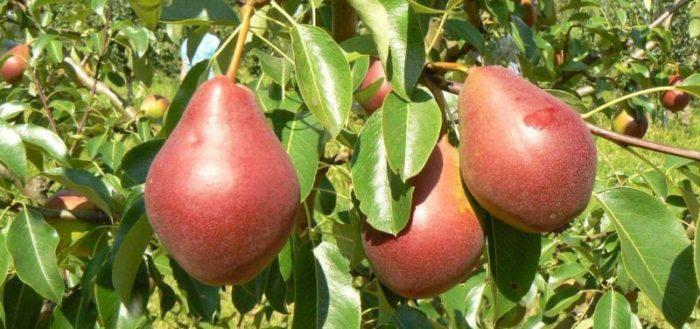
The flowers are small, white, fragrant. The flower petals are oval in shape. The lower flowers bloom first, and later the upper ones. Non-simultaneous flowering helps the tree to survive sudden spring frosts and give a good harvest. Some flowers survive after freezing temperatures.
Fruit
Medium-sized fruits can weigh 100, and sometimes 140-175 grams. They have an elongated pear-shaped shape. The skin of the fruit is smooth, with noticeable subcutaneous punctures.
The fruits are green at first, but as they ripen they turn yellow, on top they are covered with a purple color.
At the time of full ripeness, the color of the fruit is 95 percent burgundy. The calyx does not fall off; red dots are visible on the yellowish-green skin near it. Inside there are large dark brown seeds.

The pulp of the fruit is creamy. It is semi-oily and dense, but at the same time tender and juicy.The taste is sweet and sour, but slightly tart.
Pros and cons of the variety
The variety has its own strengths and weaknesses. It is advisable to grow pears for sale. They retain their attractive presentation for a long time. In addition, they have excellent taste characteristics.
Pros:
- winter hardiness;
- high productivity;
- stable fruiting.
Minuses:
- starts bearing fruit too late;
- it is difficult to determine the moment when to pick the fruits.
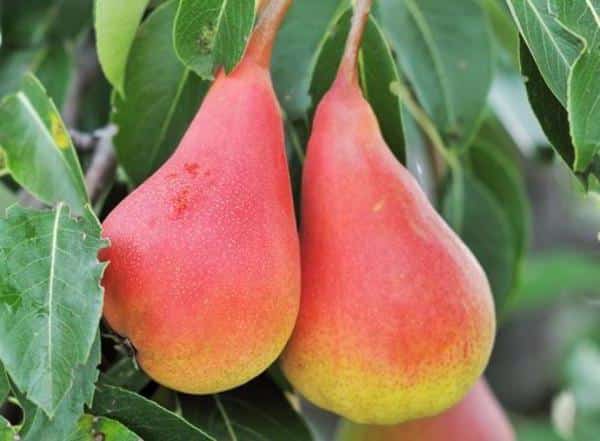
Features of planting operations
Like all pears, Elegant Efimova loves light and warmth. It is better to plant trees on the south side of the site, in clearings from the wind.
Seat selection
Elegant Efimova loves a lot of sunlight. It is undesirable to plant it in the shade of other trees. It will not be able to fully develop, and the fruits will be sour and tasteless. If the water table is too high, drain the soil before planting. Better to plant a tree on a small hill. Too flooded soil leads to the death of a tree.
The tree takes root well in poor soil. It is preferable to plant a pear on black soil. Loamy and sandy soil is suitable for planting. True, fertilizers will need to be applied under the roots. The acidity of the soil should be medium.
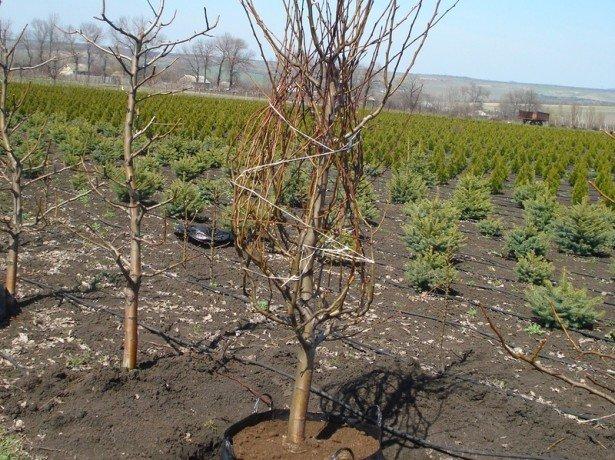
Boarding time
The smart Efimova can be planted in spring or autumn. Spring planting is preferred for colder regions. When the temperature is stable outside, and buds have not yet blossomed on other trees, the pear can be planted in the ground. In countries with warm climates, Dressy Efimova is planted in the fall. Usually - 14 days before the onset of frost.
Selection of seedlings
It is better to buy seedlings in nurseries, together with a certificate. The planting plant is 1 or 2 years old. Young trees should have a well-developed root system.
In 10 centimeters from the root collar, a grafting should be visible in a healthy varietal seedling.
Too large trees do not take root well. It is better to take seedlings up to 1.5 meters in height, which are in the package. Subsequently, the tree can be planted in open ground along with an earthen clod. In this case, the roots will not be injured.
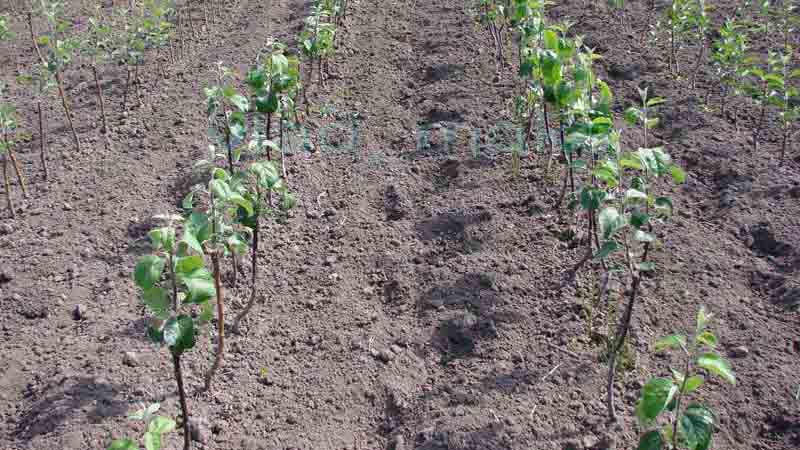
Correct fit
Before planting, a pit must be made in 14 days. Size - 1 meter wide and 75 centimeters deep. The soil must have time to settle. Before planting, the roots of the tree are immersed in water with the addition of a fertilizer such as potassium humate (2 tablespoons per 10 liters of liquid).
You need to prepare the ground with which the roots will be sprinkled. To it you need to add 1 bucket of humus, half a kilogram of ash or 100 grams of potassium sulfide, 100 grams of superphosphate. If the soil is acidic, add half a kilogram of lime to it. Sandy soil before planting is fertilized with 2 buckets of humus and 10 kilograms of clay.
How does the planting take place: fertilized soil is poured onto the bottom of the hole, a tree is lowered from above and covered with earth to the root collar. After planting, 2 buckets of water are poured under the roots.
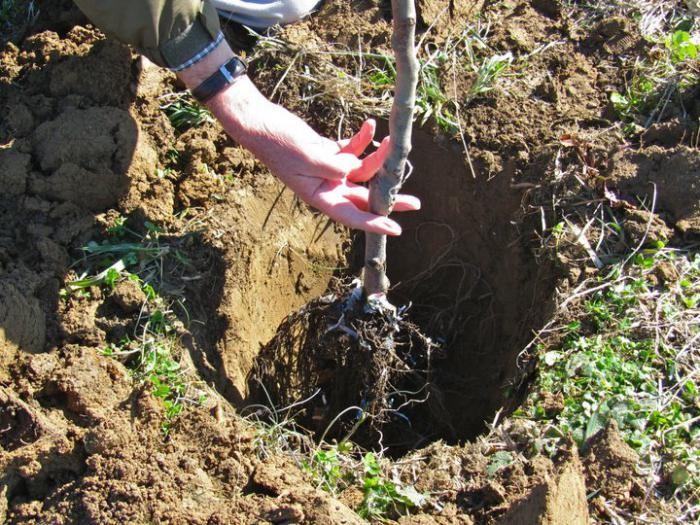
The yield of this variety depends on the correct planting not only of the most elegant Efimova, but also on the trees that will be nearby. On one site, the following types of pears should be planted: Marble, Lyubimitsa Yakovleva, Bessemyanka.
Features of plant care
Dressed Efimova requires leaving. If you take care of the tree, cut off excess branches in time, water in dry weather, it will give a good harvest.
Watering and loosening
In dry weather, the tree needs additional watering. Number of waterings per week - 3 times. If the weather is normal, you can add Dressed Efimova once every 7 days. The earth should not be allowed to dry out at the time of flowering and budding. It is during this period that the formation of ovaries occurs. Lack of water can subsequently affect yields.
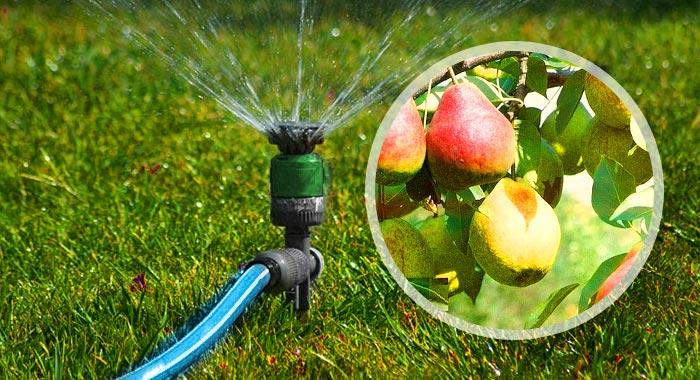
The land near the tree needs to be loosened.The soil should not be too dense. The soil can be made looser by adding a bucket of sand and humus to it. To prevent moisture loss, the soil is mulched with finely chopped hay or straw.
Top dressing
After planting in well-fertilized soil, the pear needs additional feeding only in the third year. In the spring, the tree requires nitrogen. Ammonium nitrate is added to the soil (2 tablespoons of fertilizer are diluted in 10 liters of water). During flowering and fruit formation, superphosphate is produced in the same amount.
If the leaves turn yellow too quickly in summer, then the tree does not have enough magnesium. In September, the soil needs to be fertilized with potash and phosphorus fertilizers (one tablespoon of top dressing per 10 liters of liquid). In the spring and before frost, trees are fertilized with humus. A bucket of dissolved mullein is poured under the roots.
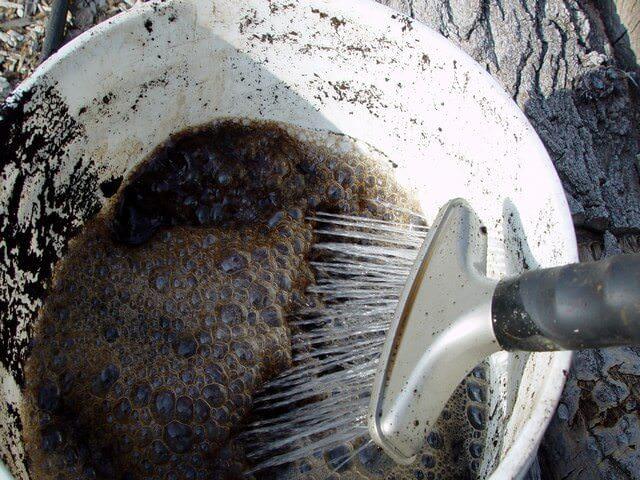
Rejuvenation
The tree grows rapidly, its branches form a dense crown, so it must be pruned annually. You need to cut off the shoots at the very base, without leaving hemp. By removing unnecessary twigs, it is possible to increase the yield. The tree does not waste juices on branches, nourishes fruits well and is less sick. It is advisable to cut off old branches from time to time, and leave young side branches. Thus, the tree is rejuvenated. Rejuvenation is carried out every 4 years.
Wintering
This variety tolerates snowy and frosty winters well. It does not need to be additionally wrapped or covered. The exception is young trees that have not yet reached the fruiting age. These trees can be tied with straw or reeds.
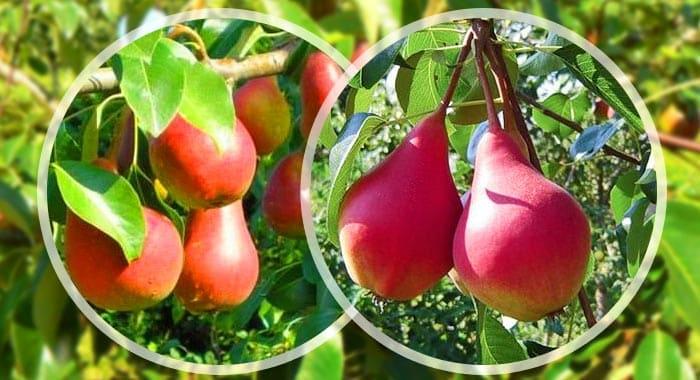
Diseases and pests
The smart Efimova is resistant to many diseases: scab, pear rust, moniliosis, cancer, bacterial burn. The fruit does not rot or stain. Pests, such as pear gall mites, also do not touch this variety. This is a huge plus for this type of fruit. Gardeners don't have to waste time on disease prevention. The tree does not need to be sprayed with chemicals.
Harvesting, storage and use of crops
In the Central Region, it is best to harvest fruits at the end of August and at the beginning of September. Pears are removed from the branches in an unripe state. The main color during this period is green-yellow with a red blush. Fruit should not be allowed to ripen on the branches. If the fruits are overexposed, their pulp becomes too crumbly, watery and tasteless.
After picking, it is advisable to let the fruit lie in a cool place for about 14 days. During this period, they will have time to fully mature. Storage term - no more than 1 month at a temperature of plus 2 degrees. Fruits are eaten raw, added to creams, cakes, pastries, meat dishes. They make desserts, preserves, compote, marmalade from them.
